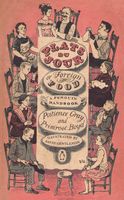🔥 Try our grilling cookbooks and save 25% on ckbk membership with code BBQ25 🔥
Roasting
By Patience Gray and Primrose Boyd
Published 1957
Roasting temperatures vary between 350 and 450 deg. F. which is about double the heat of boiling water. Roasting means the direct application of heat to joints of meat, poultry, and game before a clear fire, basting the while, at a temperature sufficient to brown but not burn the meat. Meat enclosed in an oven and submitted to indirect heat of the same temperature is not properly roasted but baked. However, as this is what we all do and continue to talk about the ‘roast’, we will not start calling it ‘baked’ beef. Different types of meat require different treatment. Beef should go into a hot oven so that a strong heat seals its surfaces and drives the juice inwards, after which the oven temperature can be moderated. Mutton and lamb, in the form of leg, shoulder, or loin is improved by cooking in a moderate oven, and it is not necessary to heat the oven in advance. As the oven heats, the joint of lamb or mutton renders some of its excess fat, and it will be found in practice that very little valuable juice escapes. The oven temperature should not exceed 350 deg. F. Whereas only beef of inferior quality should be marinaded before roasting, or beef which owing to hot weather might begin to go off, lamb and mutton are improved in flavour by rubbing the fat coating with salt, and pouring over it the squeezed juice of a lemon and a little olive oil. A bouquet of herbs should roast with the meat, a sprig of rosemary is an especially good aromatic for lamb or veal. Poultry need to have their tender breasts protected with a bard of bacon. Large capons and geese especially should be stuffed and trussed, fired in very hot olive oil, wrapped in several layers of greaseproof paper, and baked very slowly for a long time, on a grid over a baking tin. The goose should be pricked all over after firing in oil, so that the excess of fat can seep during this slow cooking into the pan. An astonishing amount will be collected, and can be saved for the many dishes which specially call for its use. Joints should be placed on a grid over a baking tin, and not put directly into the tin.
Become a Premium Member to access this page
Unlimited, ad-free access to hundreds of the world’s best cookbooks
Over 160,000 recipes with thousands more added every month
Recommended by leading chefs and food writers
Powerful search filters to match your tastes
Create collections and add reviews or private notes to any recipe
Swipe to browse each cookbook from cover-to-cover
Manage your subscription via the My Membership page
Part of
Advertisement
Related Recipes
-
-
-
-
Related Reference
-
-
-
-
Advertisement




